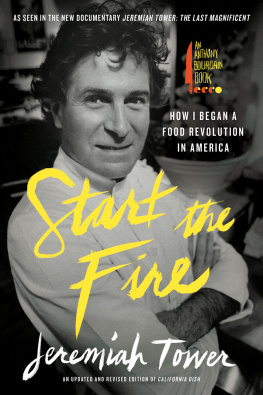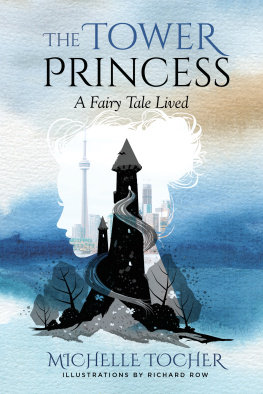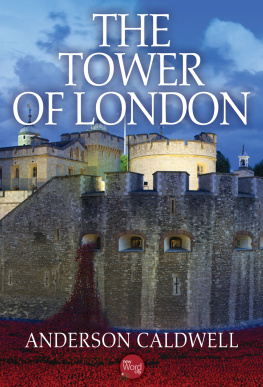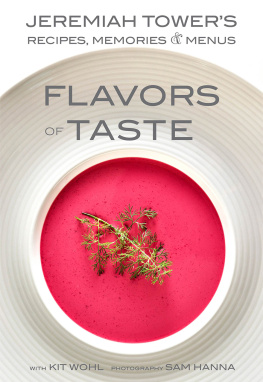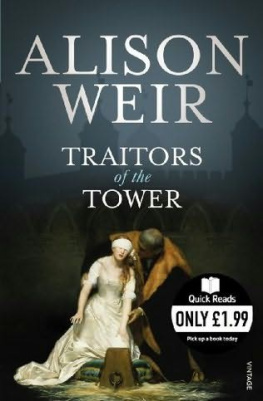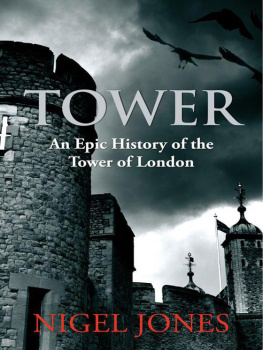One day in 1976, Jeremiah Tower was leafing through some old cookbooks, seeking inspiration for the next in a series of French regional menus at Chez Panisse, a modest restaurant in Berkeley, California, where he was the chef. In a turn-of-the-century collection of recipes by Charles Ranhoffer, the French chef of Delmonicos in New York, Tower encountered something unexpected....
I saw the title of a soup, Crme de Mais Verte la MendocinoCream of Green Corn la Mendocino, he writes in Jeremiah Towers New American Classics, published in 1986. Why, Tower wondered, did a recipe from a French chef in New York refer to a Northern California town? Like a bolt out of the heavens, it came to me: Why am I scratching around in Corsica when I have it bountifully all around me here in California? The recipe, Tower discovered, was nothing but American ingredients prepared according to French cooking principles. I could not contain my exhilaration, he wrote, over what I beheld as the enormous doors of habit swung open onto a whole new vista. And I began to compose an American regional dinnerCalifornia, not Corsica. Chez Panisse had been open for five years. No one had yet uttered the term California cuisine. Proprietor Alice Waters and her friends were just cooking the way Americans do at home, using American ingredients to make recipes from classic cookbooks. They took a lot from France, the occasional dish from Italy or elsewhere in the Mediterranean, and a little from mom. But the elements were there, and inspiration met opportunity. Chez Panisses previous menus had been written in French, but this one Tower couched in English. Significantly, the wines offered were from California as well. The menu crystallized Waterss vision of the sort of food Chez Panisse should servegreat local ingredients prepared classically.
Wine Spectator,2001
To all the people whose backs I climbed over, and all the players who made this history.
Especially Lucius Beebe, my hero since college days. If anything is worth doing, he once said, it is worth doing in style and on your own termsand nobody goddamned elses. I wanted to be as James Villas described him in a Gourmet magazine article called Lucius Beebe: The Last Magnifico: the randy and dandy boulevardier, the eminently polite, generous, witty, and kind gentleman, who was not out to impress anybody and simply relished a civilized evening on the town over a hot bird and a cold bottle.
SPECIAL THANKS
To Kit Wohl of Wohl & Company in New Orleans, who urged me to rewrite it and showed me the way. To Linda Ellerbee, who pushed her to ask me. To Dan Halpern at Ecco for saying yes as well as Kimberly Witherspoon at InkWell Management for urging them to. Especially to Anthony Bourdain, who made this rerun possible, and who, with Kitchen Confidential, let me know I wasnt the only one.
What the fuck is California cuisine? asked East Coast chef Dan Barber in late 2014. I feel I should now answer his question. And whats the point? Culinary background and history may be fascinating and useful for some, but bore the crap out of others.
During a 2015 summer Blood Moon eclipse dinner at Dan Barbers Blue Hill at Stone Barns with six very smart, ambitious, and dedicated young men in their twenties who wanted to re-create Stars, I knew the point. After an hour of hearing them talk about American restaurants, food, and wine, I could think only of kids learning to swim the hard way. Thrown into the lake and told to kick. Move their arms. A lot of determined effort, a lot of flailing, little progress.
It had been a shock to me when we opened Stars on July 4, 1984, that my twenty-something kitchen crew knew nothing of Americas culinary past. My eager young hosts at Stone Barns had heard of culinary America, had watched all the TV shows, but they also knew nothing about where it came from. Asking them the key to their futures, or what they could discard of the past to get on with an intelligent future, was pointless. I made do with Does America, the worlds biggest melting pot of cultures, have its own distinct culinary identity? Or is it just about making a thousand errors, then connecting the errors? Is the American food revolution the realm of legend, of myth? After all, what this young group of cooks, waiters, and sommeliers know of the origins of the changes in culinary America is pure media. None were there at the beginning of the revolution or grounded in what inspired it. The new generation has adopted the terminology of fresh, organic, local, and California, but how many of them had ever gardened or been on a farm? If the essential meanings of these concepts for them live only in the press, cooking magazines, and the floodlights of fame, one can hardly blame them. Some of their mentors were press-manipulating mythmakers.
Do we have that problem again?
The question gripped a group of chefs during the Worlds 50 Best Restaurants first #50BestTalks event in New York in October 2014, put together as a forum to debate the future of American dining. The chefs group included Eleven Madison Park co-owners Will Guidara and Daniel Humm, Eatalys Mario Batali, British chef April Bloomfield of the Spotted Pig, Italian chef Massimo Bottura of legendary Osteria Francescana, Wylie Dufresne, Sabato Sagaria of the Union Square Hospitality Group, Nick Kokonas of Chicagos Alinea and Next, and Andrew Carmellini.

